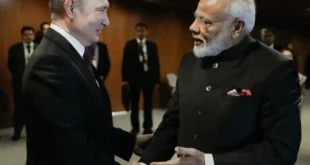Giancarlo Elia Valori
Currently natural gas is one of the most important US assets in its relations with the European Union.
In fact, President Trump and President Jean Claude Juncker spoke at length about it during their last meeting at the White House at the end of July 2018.
Obviously the issue of the US natural gas sales is linked to a broader strategic theme for President Trump.
He wants to redesign – especially with the EU – the system of tariffs and rebalance world trade.
He also wants to recreate a commercial and economic hegemony between the United States and the EU – a hegemony that had tarnished over the last decade.
With the EU, the United States has already achieved a zero-tariff regime for most of the goods traded, also removing non-tariff barriers and all the subsidies to non-automotive goods.
Moreover, since late July last, both sides have decided to increase inter-Atlantic trade in services, chemicals, pharmaceuticals, medical products and – as a central issue in their relations with China – soybeans.
What China no longer buys – since it has been burdened with tariffs and duties – is resold to the European Union.
In fact, soy was bought massively by European consumers, as Jean Claude Juncker later added.
The demand for natural gas, however, is on the rise all over the world.
Currently Europe is in difficulty for this specific energy sector, considering that the large gas extraction field in Groningen, Netherlands, suffered an earthquake at the beginning of January 2018.
The Dutch extraction area, however, is managed jointly by both Royal Dutch Shell and Exxon-Mobil.
The North American analysts think that, for the whole EU, the other natural gas sources are at their peak of exploitation.
Gas sources such as Russia, Turkey, Central Asia and the Maghreb region are supposed to be soon saturated as a result of the growth in EU gas consumption and, therefore, the United States is thinking to sell much of its LNG to Europe as well.
With an obvious strategic and geopolitical pendant.
This holds particularly true – at least for the time being – for the Algerian gas, while the United States is currently pressing for a diversification from the Russian pipelines, offering its liquefied natural gas (LNG) for ships to Northern Europe’s terminals and, recently, also to the Italian ones.
Across the European Union, the natural gas terminals are 28, including Turkey.
There are also eight other small natural gas terminals in Finland, Sweden, Germany, Norway and Gibraltar.
Said terminals are 23 in the EU and 4 in Turkey; 23 are land-based and 4 are at sea for storage and regasification, and the Malta terminal includes both a ground base and a maritime unit.
Italy, one of the largest LNG consumers in Europe, produces a good share of natural gas internally, but it still imports 90% of the gas it consumes, while 60% of Italy’s LNG consumption is divided almost equally between two suppliers, Algeria and the Russian Federation.
By way of comparison, France extracts domestically only 1% of the natural gas it consumes every year.
Also Germany, like Italy, imports much gas from Russia – about 50% of its yearly consumption.
From where, however, does Italy import its natural gas? From Russia, as already seen, as well as from Algeria, Libya, Holland and Norway.
Then there is the Trans Austria Gas (TAG), a network which, again from Russia, brings gas to the Slovakian-Austrian border (precisely to Baumgarten an der March up to Arnoldstein in Southern Austria) with a maximum capacity of 107 million cubic meters per day.
There is also Transitgas, crossing Wallbach, Switzerland, up to Passo Gries, where it intersects with the SNAM network.
It is also connected to Gaz de France and has a maximum capacity of 59 million cubic meters per day.
A significant role is also played by the Trans Tunisian Pipeline Company (TTPC), a network with a capacity of 108 million cubic meters per day, stretching from Oued al Saf, between Tunisia and Algeria, to Cape Bon, where it connects with the Trans-Mediterranean Pipeline Company (TMPC). The network reaches Mazara del Vallo, where it enters the SNAM system.
The security of this line was a factor considered in the decision taken by the Italian intelligence services to participate actively in the struggle for succession in Tunisia, after Habib Bourghiba’s political end.
The Greenstream pipeline connects Libya to Italy, with a maximum capacity of 46.7 million cubic meters per day, with regasifiers located in Panigaglia and off Leghorn’s coast (OLT), as well as off Rovigo’s coast.
It should be recalled that, in July 2018, ENI opened production in the offshore plant of Bar Essalam, a site 120 kilometres off Tripoli’s coast, which could contain 260 billion cubic meters of gas, while the French company Total paid 450 million dollars to buy – from the United States – 16% of the oil concession in Waha, Libya.
As is well known, the TAP is under construction.
With a maximum capacity of 24.6 million cubic meters per day, it stretches from Greece to Italy through Albania.
There is also the IGI Poseidon, again between Greece and Italy, as well as the regasification terminal of Porto Empedocle, and the other terminals of Gioia Tauro and Falconara Marittima.
Shortly the pipelines from Algeria to Sardinia could be operational, with a terminal in Piombino, as well as the one in Zaule, and the regasification plant in Monfalcone.
Hence if all these networks are already operational or will be so in the near future, Italy alone could shift the axis of the natural gas transport from the North (namely Great Britain and Holland) to the South (namely Italy and Greece).
If this operation is successful, Italy could become the future natural gas energy hub, thus making it turn from a mere consumer to an exporter of natural gas.
In 2020, SNAM plans to bring 4.5 billion cubic meters of gas from the Trans-Adriatic Pipeline, which transports Azerbaijan’s LNG, jointly with BP.
This is a further phase of reduction of the EU dependence on Russian gas.
But also the purchase of LNG from the United States could undermine the Italian plan of becoming the European natural gas hub, as against the Dutch-British system.
Obviously the liquefied natural gas is sold by the United States mainly as an operation against Russia.
Currently, the American LNG has prices that are approximately 50% lower than the Russian gas prices.
As pointed out by one of the major Italian energy experts, Davide tabarelli, the price is 8 euros per megawatt / hour as against 22 euros of the LNG coming from Russia.
For the time being, however, China is the world’s top LNG buyer, with a 40% increase in its consumption.
Nevertheless, while China’s gas consumption is booming, the ships carrying natural gas from the United States tend to go right to Asia, where, inter alia, a much higher price than the European average can be charged.
In the EU, however, the Russian gas can be bought at 3.5-4 dollars per Mega British Thermal Unit (MBtu) while the break-even price of the US gas, which is much more expensive to produce, is around 6-7.5 MBtu, including transport.
Competition, however, is still fierce, given that the EU regasifiers are used at 27% of their potential, and considering Qatar’s harsh competition with the United States. It is worth recalling that Qatar is a large producer of natural gas with the South Pars II field, in connection with Iran.
In the near future, the small Emirate plans to sell at least 100 million tons of LNG per year, opposed only by Saudi Arabia’s reaction. According to the usual rating agencies, at banking level Qatar is also expected to suffer the pressure of Saudi Arabia and its allies, including the United States.
Nevertheless, if the cost of the trans-Atlantic transport and the cost of regasification in our terminals are added to the 8 euros about which Tabarelli speaks, we can see that the US gas and the Russian LNG prices tend to become the same.
Russia has also much lower gas production costs than the United States, considering that most of the North American LNG is extracted with shale or fracking technologies, which are much more expensive than the Russian ones.
It should be recalled that in 2017 the Russian Federation was the world’s top natural gas exporter, with a record peak of 190 billion cubic meters, accounting for 40% of all EU consumption.
Moreover, thanks to fracking technologies, the United States has become the world’s largest crude oil producer, but also the largest consumer globally. Hence no additional room for its exports of non-gas hydrocarbons can be easily envisaged.
Certainly buying American gas would mean avoiding the US import tariffs for European cars in the future, which would lead many EU governments to willingly accept President Trump’s offer.
Furthermore, ENI is finding much oil and much natural gas in Egypt, which could lead to the building of a pipeline from the Egyptian coast to which also the Israeli natural gas could join.
This implies a significant weakening of both the Egyptian domestic crisis and the tensions between the “moderate” Arab world and the Jewish State.
In fact, in the concession of Obayed East, Egypt, ENI has found a natural gas reserve of 25 million cubic meters per day which, together with the recent discoveries of the Zohr, Norus and Atol deposits, is expected to make Egypt achieve energy autonomy and independence before early winter 2018-2019.
This, too, could be one of President Trump’s geo-energy goal, along with Israel’s expansion on this market. In all likelihood, however, Russia will remain one of the largest or still the largest LNG seller to the whole EU.
However, let us better analyse the situation: with the South Pars II field it shares with Qatar, also Iran could provide the EU with a large part of its yearly natural gas requirements.
Iran is a Russian ally although, in this case, strategic friendships are always less sound than economic interests.
Furthermore, the war in Syria resulted – and probably this is also one of its underlying causes – in a block of future Iranian pipelines to the Mediterranean.
Moreover, China has bought the shareholdings held by the French Total on the Iranian territory.
For the time being, however, the United States sells much of its LNG to Asia and Latin America, where currently prices are still higher than in Europe.
Hence, like all consumer countries, the EU is interested in diversifying its energy suppliers. Nevertheless, the war in Syria has blocked Iran and the war in Libya has made the Greenstream pipeline, which is essential for Italy, unusable.
It should be recalled that Greenstream is the 520-kilometre pipeline connecting Libya to Italy directly.
Almost all the Libyan gas, however, is currently consumed inside the country.
Moreover, at this stage, President Trump would like Germany to stop even the doubling of Nord Stream 2 from the Russian coast to the German Baltic Sea.
The Ukrainian leadership is also urging the EU to avoid doubling this project, considering the forthcoming expiry of the Ukrainian contracts for the Russian natural gas.
If this happens, as from 2022 Poland will buy a large share of its natural gas from the United States, thus avoiding the Russian LNG.
Nevertheless, the United States will also favour the Southern Gas Corridor in Azerbaijan and Turkey, with a view to transferring the Caspian natural gas to the EU through Apulia.
Hence Italy would be disadvantaged: instead of using its lines and routes with Libya and Algeria, or Russia, it should buy the Caucasian gas, which will be fully managed by US companies – and this holds true also for the US natural gas direct sales, which have recently started in some Italian ports.
A dangerous political calculation, as well as a risky commercial evaluation.
 Geostrategic Media Political Commentary, Analysis, Security, Defense
Geostrategic Media Political Commentary, Analysis, Security, Defense





